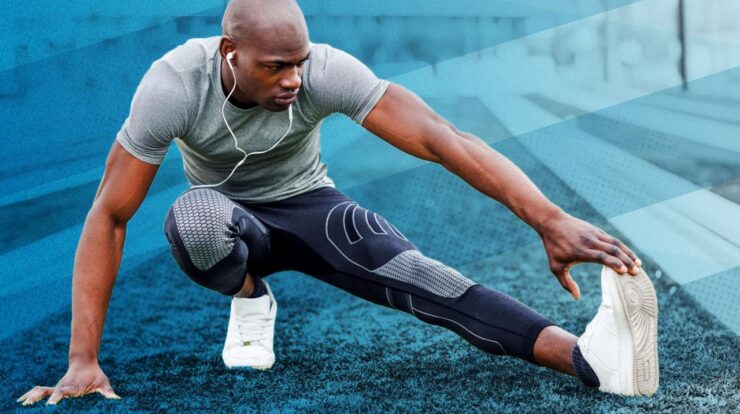
Exercises to relieve lower back pain – Lower back pain affects millions of people worldwide, but it doesn’t have to be a constant companion. Discover effective exercises that can alleviate pain, improve mobility, and prevent future episodes.
This comprehensive guide explores the causes of lower back pain, provides step-by-step instructions for targeted exercises, and offers practical lifestyle modifications to support your recovery journey.
Understanding Lower Back Pain: Exercises To Relieve Lower Back Pain

Lower back pain, also known as lumbago, is a common condition that affects millions of people worldwide. It can range from a mild ache to severe, debilitating pain. The most common causes of lower back pain include:
- Muscle strains or sprains
- Herniated or bulging discs
- Arthritis
- Sciatica
- Osteoporosis
The lower back, or lumbar spine, consists of five vertebrae that support the weight of the upper body. These vertebrae are connected by ligaments and muscles, which allow for movement and flexibility. When these structures are injured or damaged, it can lead to lower back pain.
Exercises for Relieving Lower Back Pain
Exercise is an effective way to relieve lower back pain by strengthening muscles, improving flexibility, and reducing inflammation. Here are some exercises that can help:|
- *Category |
- *Exercise |
- *Steps |
- *Repetitions |
- *Frequency |
|—|—|—|—|—||
- *Stretching |
- *Cat-cow stretch | 1. Start on your hands and knees, with your hands shoulder-width apart and your knees hip-width apart. 2. Inhale, arching your back and lifting your head and tailbone. 3. Exhale, rounding your back and tucking your chin to your chest.
| 10-15 repetitions | Daily |
|
- *Strengthening |
- *Glute bridge | 1. Lie on your back with your knees bent and your feet flat on the floor. 2. Lift your hips off the ground, squeezing your glutes at the top of the movement. 3. Lower your hips back down.
| 10-15 repetitions | 2-3 times per week |
|
- *Core exercises |
- *Plank | 1. Start in a push-up position, with your forearms on the ground and your body in a straight line from your head to your heels. 2. Hold this position for as long as possible. | 30-60 seconds | Daily |
|
- *Flexibility |
- *Child’s pose | 1. Kneel on the floor with your knees hip-width apart and your toes pointed. 2. Sit back on your heels and fold forward, resting your forehead on the ground. 3. Hold this position for 1-2 minutes. | 1-2 minutes | Daily |
Benefits of Exercise for Lower Back Pain
Exercise can provide several benefits for people with lower back pain, including:
- Strengthening the muscles that support the lower back
- Improving flexibility and range of motion
- Reducing inflammation
- Promoting blood flow to the lower back
- Relieving pain and stiffness
- Preventing future episodes of pain
Precautions and Considerations, Exercises to relieve lower back pain
Before starting an exercise program for lower back pain, it is important to consult with a healthcare professional. This is especially important if you have any underlying health conditions or if your pain is severe. Some precautions to consider include:
- Start slowly and gradually increase the intensity and duration of your exercises over time.
- Listen to your body and stop if you experience any pain.
- Use proper form to avoid further injury.
- If you have any concerns, consult with a healthcare professional.
Lifestyle Modifications for Lower Back Pain
In addition to exercise, there are several lifestyle modifications that can help to relieve lower back pain, including:
- Improving posture
- Maintaining a healthy weight
- Managing stress
- Using ergonomic workstations
- Practicing proper lifting techniques
Additional Resources for Lower Back Pain
[American Academy of Orthopaedic Surgeons](https
//www.aaos.org/)
[National Institute of Arthritis and Musculoskeletal and Skin Diseases](https
//www.niams.nih.gov/)
[Mayo Clinic](https
//www.mayoclinic.org/)
[WebMD](https
//www.webmd.com/)
[Spine-Health](https
//www.spine-health.com/)
Final Summary

By incorporating these exercises into your routine, you can strengthen your lower back, improve flexibility, and reduce pain. Remember to consult a healthcare professional before starting any exercise program, and always listen to your body’s cues. With dedication and consistency, you can effectively manage lower back pain and regain your active lifestyle.
FAQs
How often should I perform these exercises?
Frequency depends on your pain level and individual needs. Start with 2-3 sessions per week and gradually increase as tolerated.
Can I do these exercises if I have a herniated disc?
Some exercises may not be suitable for herniated discs. Consult a healthcare professional before starting any exercise program.
If you’re experiencing lower back pain, there are a number of exercises you can do to help relieve the discomfort. These exercises can help strengthen the muscles in your back and improve your posture, which can both help to reduce pain.
Additionally, regular exercise is one of the best ways to prevent flexibility issues. Regular exercise helps to keep your muscles and joints limber, which can help to prevent stiffness and pain. If you’re looking for a fun way to get some exercise, you can try yoga or Pilates . Both of these activities are great for improving flexibility and strength.
Will these exercises completely eliminate my back pain?
If you’re looking to lose weight in your lower back, there are a number of exercises you can do to help. These exercises can help to target the muscles in your lower back and burn fat. Additionally, regular exercise is one of the best ways to prevent flexibility issues.
Regular exercise helps to keep your muscles and joints limber, which can help to prevent stiffness and pain. If you’re looking for a fun way to get some exercise, you can try yoga or Pilates . Both of these activities are great for improving flexibility and strength.
While exercises can significantly reduce pain, they may not completely eliminate it. Pain management is often a multi-faceted approach involving exercise, medication, and lifestyle changes.







